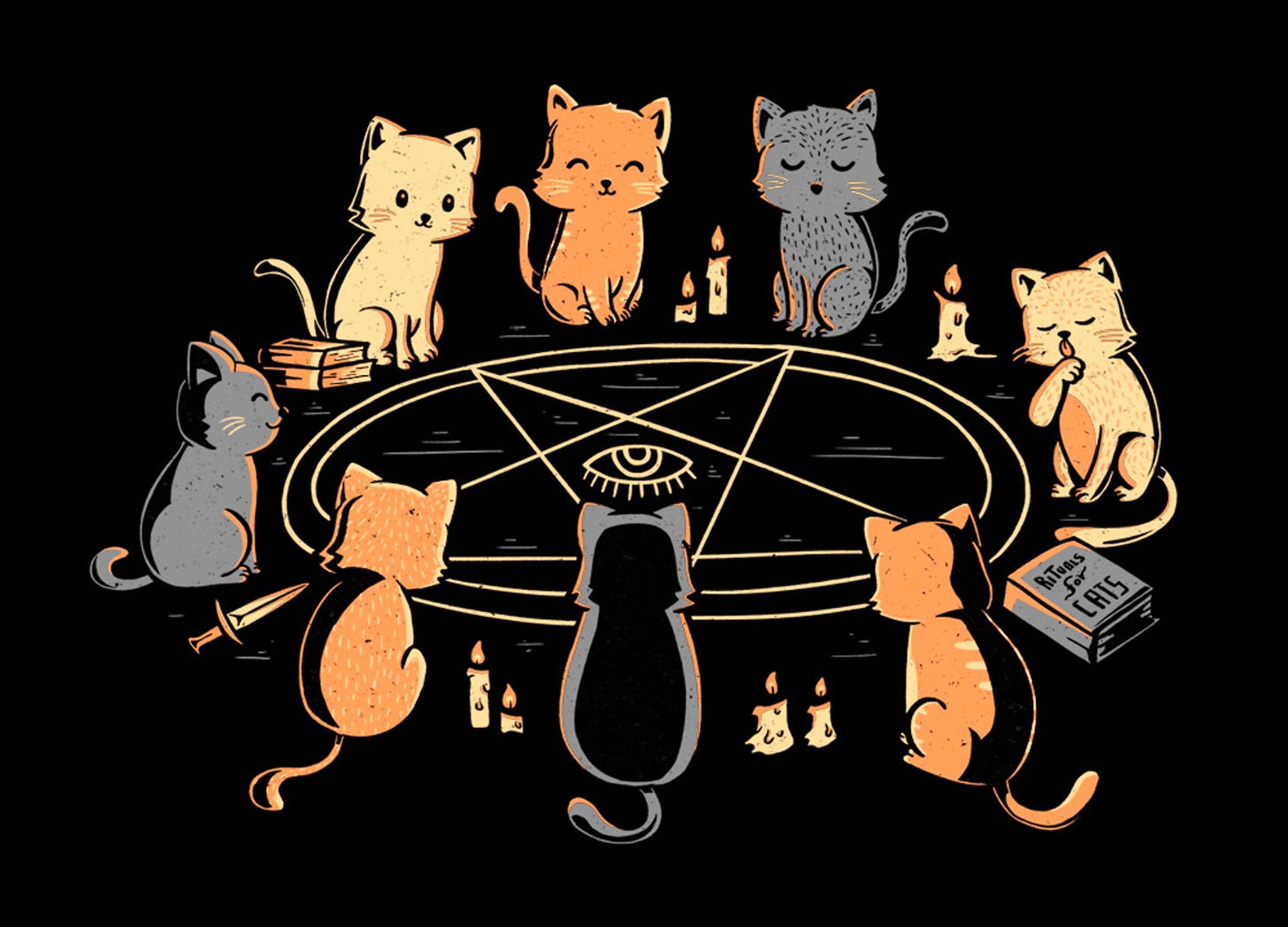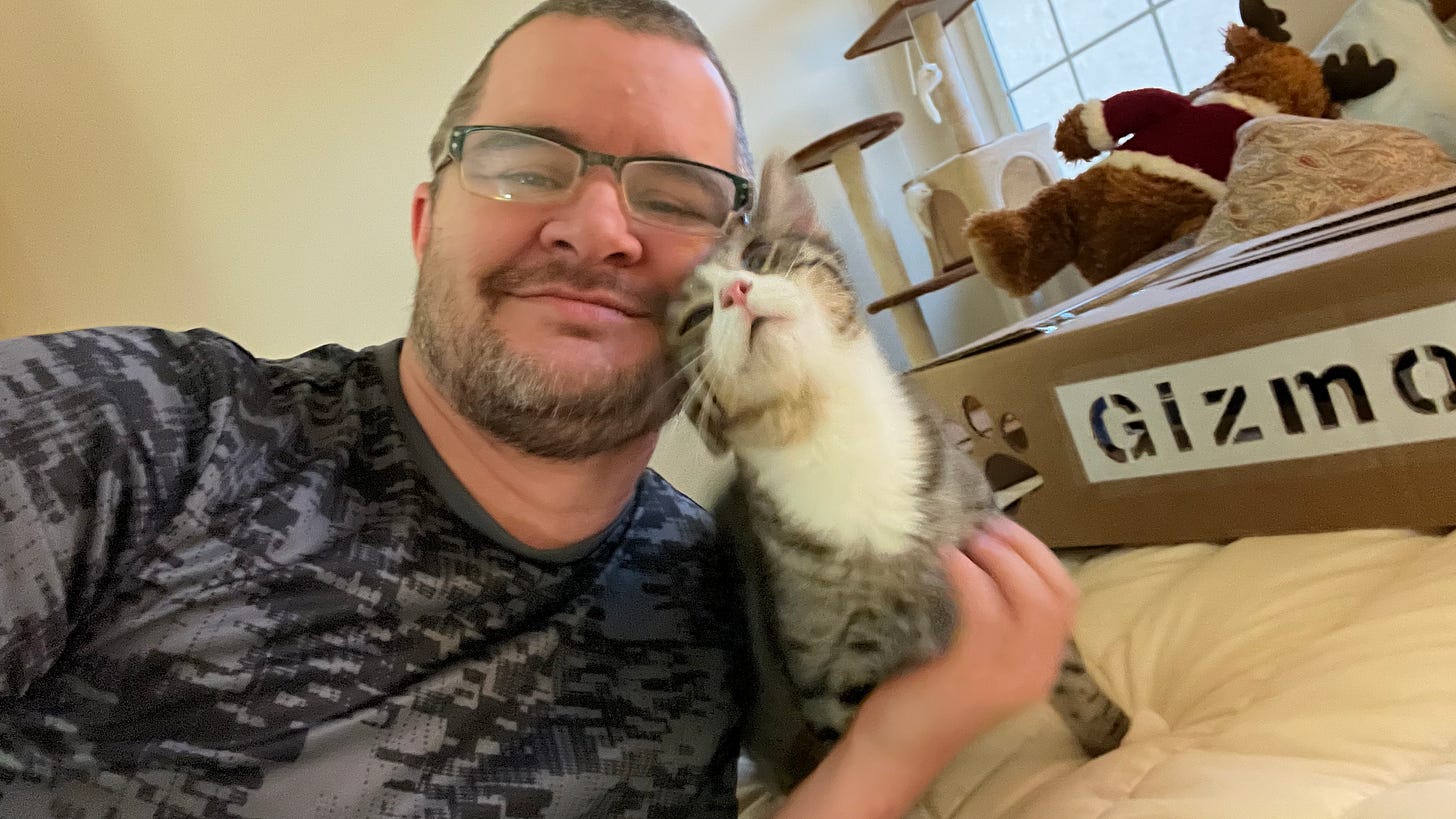Rule #6: Imagination
Play doesn’t always have to be equally fun to parent and child to count as quality time.
2012 Original
Indulge her imagination.
You be the kitty, she’ll be the mommy, then she’ll be the kitty and you’ll be the baby kitty. It’s going to get boring for you, but it’s good for her. Keep doing it. Meow some more. Don’t forget to hiss.
2017 Update
Well, duh.
I mean, I’m sure there’s people out there who don’t know how to do that, or feel too busy or too silly or too something, but I’m not one of those people. Buried in that very sound advice, which I’m pretty sure Joanna wrote, was some profound truth. Here, let me add some emphasis:
You be the kitty, she’ll be the mommy, then she’ll be the kitty and you’ll be the baby kitty. IT’S GOING TO GET BORING FOR YOU, but it’s good for her. Keep doing it.
Oh my god does it get boring sometimes. There are bits that are fun, silly, surprising, or otherwise entertaining, but its also excruciatingly boring much of the time. I think this downside is not unique to parenting kids on the spectrum, but rather than play on an ever-shifting landscape of imagination, my kids are prone to finding a kind of play they like, and want to play that way over and over. They crave predictable routine and repetition more than novelty and surprise.
So if I’m the kitty and she’s the mommy, and she enjoyed that, that’s how she’ll want to play the next fifty times. If I deviate too far from the kitty script, the reaction can range from correcting me (because I'm playing wrong) to having a meltdown if I won’t do it her way.
Where there’s room for flexibility, I inject my own creativity and fun, too, but there’s always a danger that if I inject some element they really enjoy, they’ll incorporate that into the script for next time. For example, if I improvise the kitty playing hide and seek, that may mean playing “kitty” also means playing “hide and seek” from now on, whether I'm in the mood for hiding or not.
Our imaginative play hasn’t literally followed the kitty example, but it’s not much different in principle. I spend a lot of time indulging their imagination (especially the one who enjoys that kind of play more than the other1), even when bored out of my mind. I don’t always say yes, or I’d spend most of my waking day playing with them, but I do play a lot.
If it’s not for the sheer joy of it, why do I do it? Please direct your attention to a different emphasis:
You be the kitty, she’ll be the mommy, then she’ll be the kitty and you’ll be the baby kitty. It’s going to get boring for you, BUT IT’S GOOD FOR HER. Keep doing it.
I don’t have scientific proof, but it sounds right to me that it’s good for them. I try to savor the parts that are actually fun, and do my best through the boring parts to pretend I’m enjoying it, like my dad did for me when we did Indian Guides together.2
I was a young adult when he accidentally let slip that he never enjoyed Indian Guides, but after briefly having my nostalgia ruined, I came to appreciate that he’d done it with me because he knew I enjoyed it. Quality time doesn’t always have to be equally fun to parent and child to count as quality time.
Like many of the “failsafe” rules on this list, I don’t regard this one as gendered, but again, it fit the format of the site it was written for. Whether parents or children are male or female, I think it’s good for all involved to join in imaginative play together, even when it’s boring.
2022 Update
Most of my daughters’ play energy these days is directed toward online play with friends. I’m more likely to “be the kitty” for one of our pet cats than I am for my daughters.
T13 and I don’t “play pretend” much, but her humor is similar to mine and we can riff off each other. We had a game for a while where we’d challenge each other to make up words.
For example, I once challenged her with “when you have to do a favor that you don’t really want to do”, and she came up with relucsistance. Or for, “that feeling you get when you see someone you missed for the first time in a long time,” she coined recontent.
A key feature of imaginative or creative play is that it’s collaborative. It involves listening, taking turns, contributing ideas, and incorporating and extending others’ ideas. That’s what makes it fun, but also what makes it useful developmentally because those are important life skills, not just for playing.
Knowing why it’s important does not guarantee being able to engage in it with someone whose brain isn’t really wired that way. T2 has always loved to play and is creative, but the give-and-take component does not come naturally to her. While I come for the “Yes, and…” tradition of improvisation, she’s more of a “No, watch me do my thing…” devotee.
I feel guilty for finding her unpleasant.
T2 has a small core of friends she does most of her online gaming with. As loud and unyielding as she often is, I’m mystified how anyone puts up playing with her sometimes. My theory is she has found other kids on the spectrum, which would be great.
Imaginative play with T2 has given me many opportunities to reflect on how I’m doing as a father and to feel like a failure. I don’t see improvement that feels linked to my efforts to engage in it, I rarely enjoy trying because she can be so unpleasant to play with, and then I feel guilty for finding her unpleasant.
To be clear, I’m not complaining about mere boredom. Boredom, I could take. “Unpleasant” is playing with someone with a hair trigger temper and a history of violent meltdowns. Even in the best of moods, she dominates the play and wants attention more than collaboration, so it’s very one-sided. That dynamic is alienating, not inviting. In almost any other context besides them being your kid, no one would blame you for not wanting to play with someone who plays like that.
Our love for T2 and experience with autism means we excuse and put up with a lot, but to an outside observer with no special tenderness toward her or her underlying conditions, she can look rude and out of control.4 She doesn’t look that way all the time, but try getting her to do things she doesn’t want to do, or not get her way, and it won’t take long to feel her wrath.
Not finding it more fun to play with my daughter is a bummer, but not my most pressing concern. I’m worried whether she can ever become adept enough at the skills developed through play, to connect with people and to function as an independent person. Relative to herself, she has made progress, but if you’re not grading on a curve, she remains an “unpleasant” collaborator.
Whether you’re trying to be the kitty, the mama, or not even playing anything, T2 has been known to hiss like an angry cat. Does it count as “playing kitty” if no one is playing?
Report Card
Depends on the kid. I’ll give myself a B for T1, and D for T2. I lower my grade a little for feeling guilty about not enjoying play as much as I feel like should, but I still make the effort. It’s occasionally fun, and still feels worth it even if I’m bored. The lower mark for how well I’ve indulged T2’s imagination isn’t for lack for trying, but for perceived results. I wish I felt more effective at it, but a lot of times I just can’t get my brain on her wavelength.
The other one usually gravitates more to play that engages the senses than play that relies on imagination.
We’re talking late 1970s, when cultural appropriation was still cool.
Family nicknames for writing about them: “T1” and “T2” for our twin daughters.
Back in my Rule 4 update, when I mentioned the time I told her I was afraid she’d end up in jail, it was people “with no special tenderness toward her or her underlying conditions” that I’m worried about. Her bubble of family and therapists can’t protect her forever.


